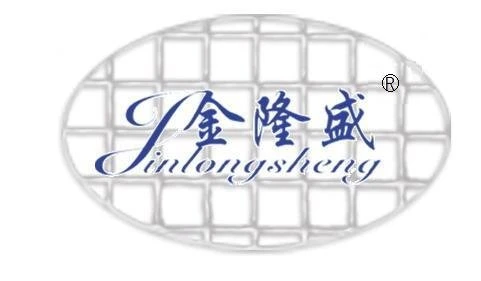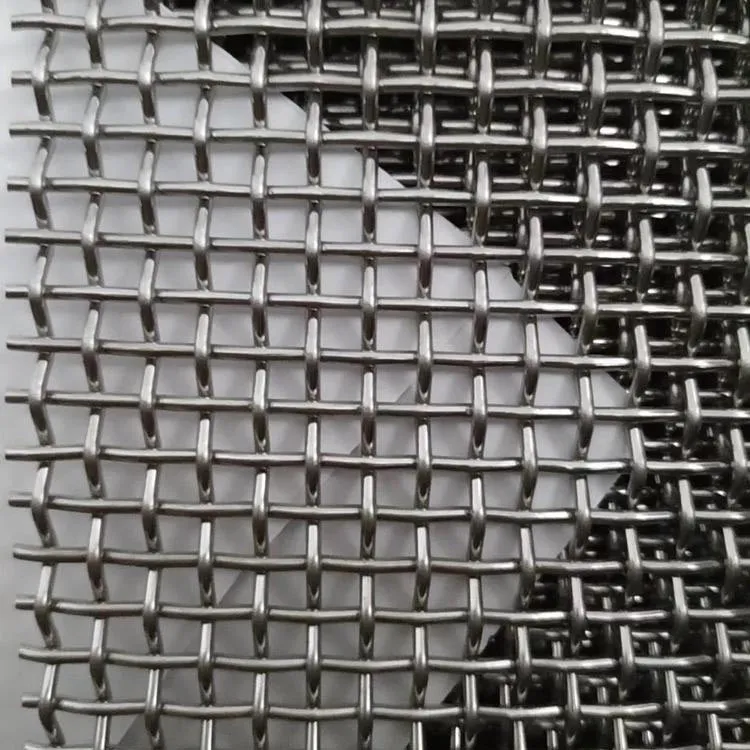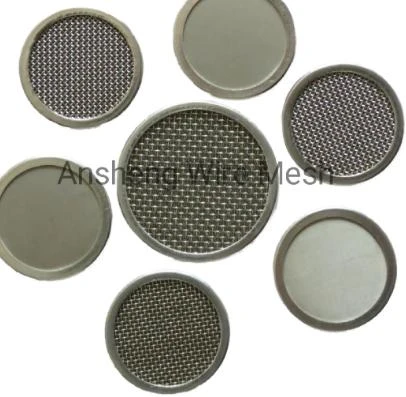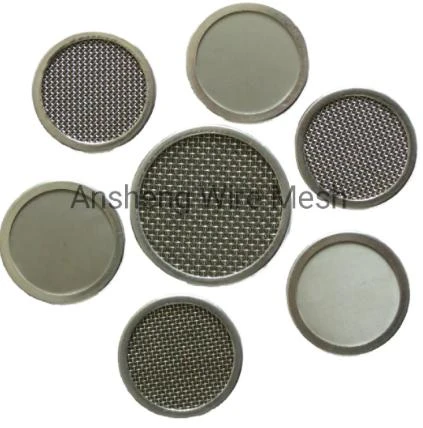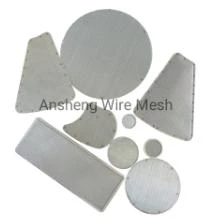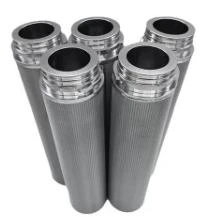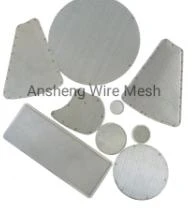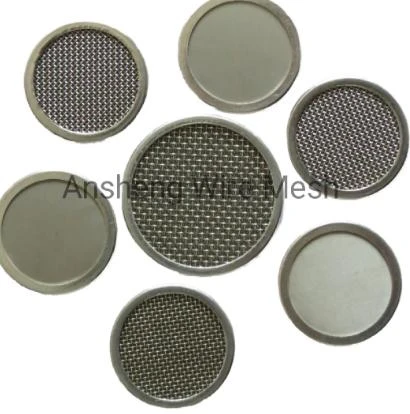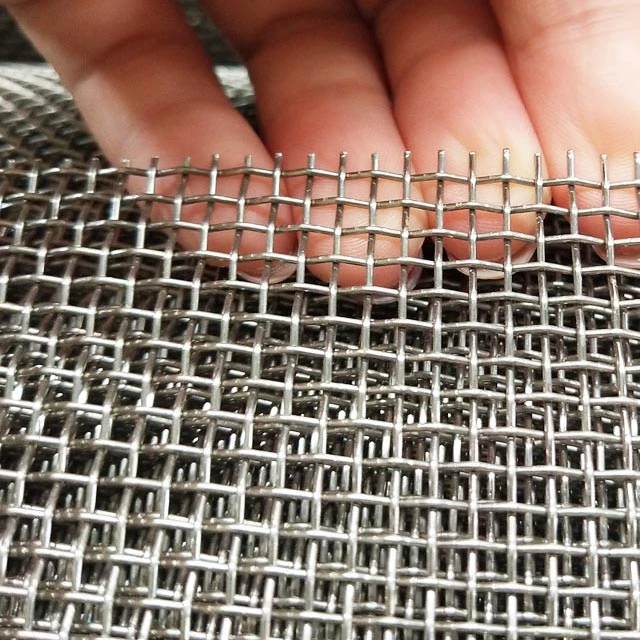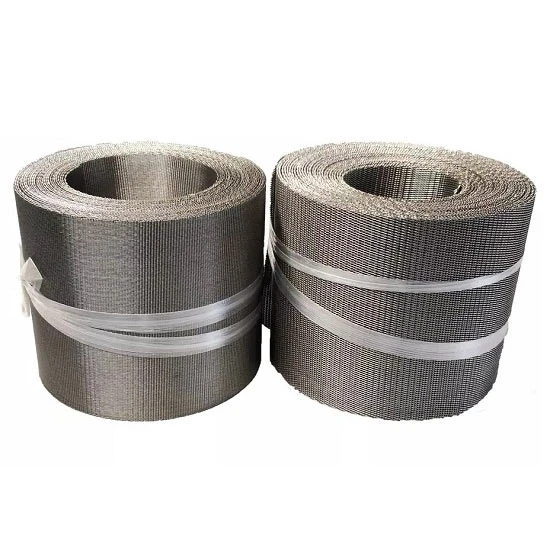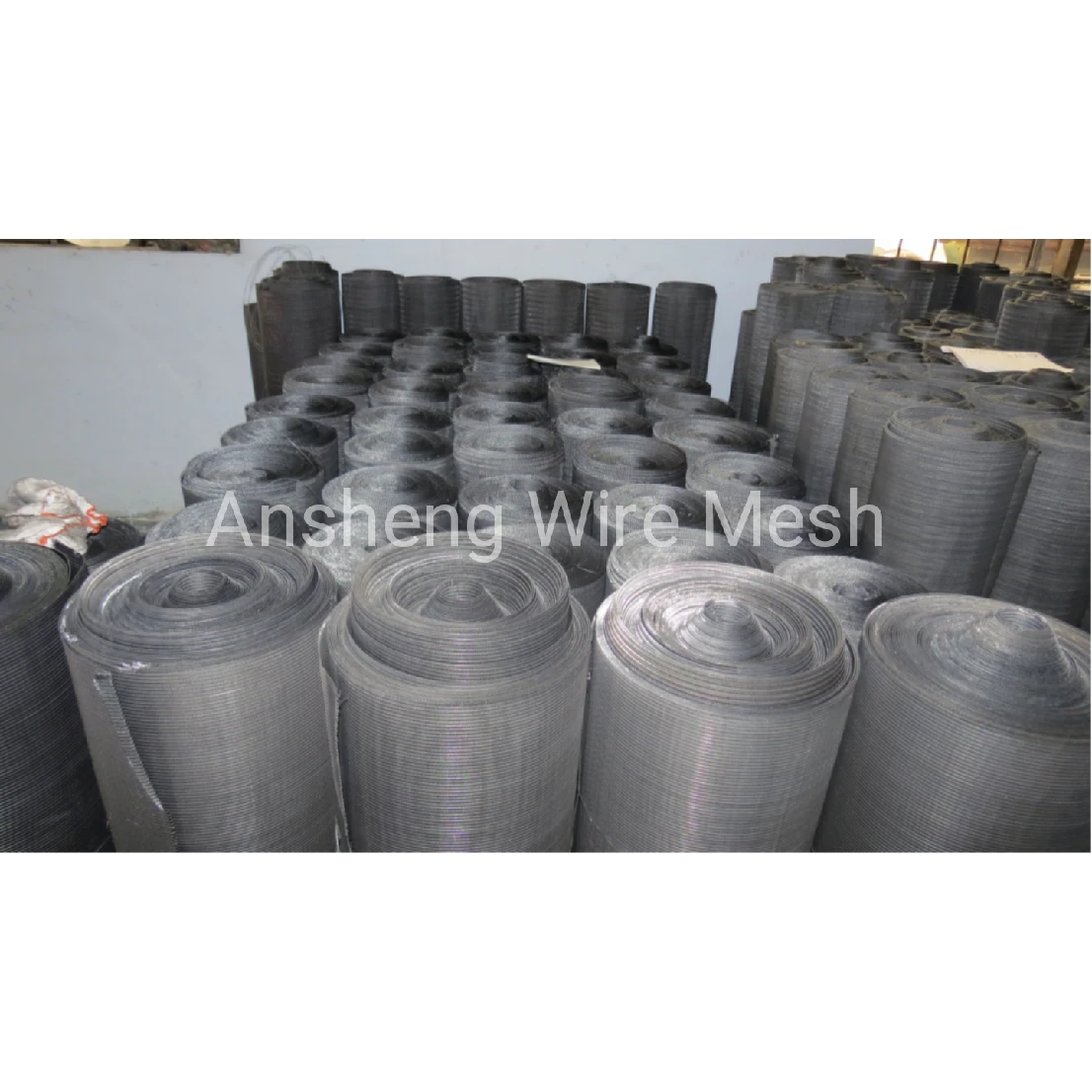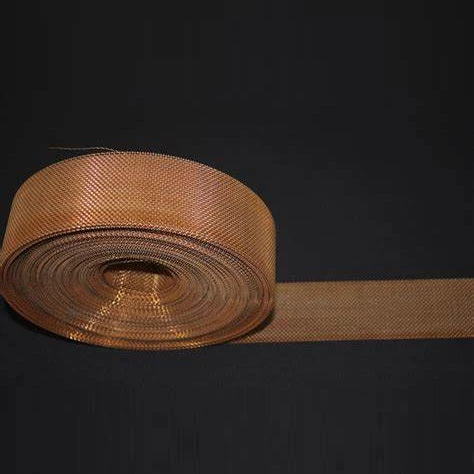Understanding herringbone mesh: An Advanced Filtration Solution
In industrial filtration and separation, the choice of wire mesh plays a critical role in efficiency, durability, and operational cost. Among the myriad of weave patterns, herringbone mesh stands out as a high-performance solution, engineered to meet the stringent demands of complex applications. This specialized weave offers distinct advantages over conventional designs, particularly in environments requiring superior strength, precise filtration, and extended service life under challenging conditions. Its unique structure contributes to enhanced mechanical stability and improved flow characteristics, making it indispensable across diverse B2B sectors.
The design principles behind herringbone mesh are rooted in optimizing both filtration efficiency and structural integrity. By manipulating the warp and weft wire arrangements, manufacturers can achieve a robust, uniform, and highly permeable medium. This article delves into the technical aspects, manufacturing processes, application versatility, and key advantages that position herringbone mesh as a premier choice for discerning industrial applications.
What is Herringbone Weave? Structure and Characteristics
The concept of what is herringbone weave revolves around a distinct twill pattern that creates a V-shaped appearance, reminiscent of the bones of a herring. Unlike standard plain or twill weaves, the herringbone pattern is achieved by reversing the direction of the twill slant at regular intervals. In wire mesh applications, this translates into a unique configuration where the wires are woven to form a series of parallel diagonal ribs, with the direction of the diagonals alternating. This intricate weaving technique provides several structural benefits crucial for high-performance filtration media.
Key characteristics of the herringbone weave in wire mesh include:
- Enhanced Structural Stability: The alternating twill direction creates a highly interlocking structure, significantly increasing the mesh's mechanical strength and resistance to deformation under stress. This is vital for applications involving high differential pressures.
- Improved Filtration Precision: The uniform aperture sizes maintained by the herringbone weave ensure consistent and accurate particle retention, leading to superior separation efficiency.
- Greater Flow Rates: Despite its robustness, the weave can be designed to maintain excellent permeability, allowing for high flow rates without compromising filtration quality.
- Wear Resistance: The robust construction and even distribution of stress across the wires contribute to prolonged service life, even in abrasive environments.
Typically, herringbone mesh is manufactured from high-grade stainless steels such as SS304, SS316, or SS316L, chosen for their exceptional corrosion resistance, high-temperature stability, and mechanical properties. These materials ensure that the mesh performs reliably in aggressive chemical environments and under extreme thermal conditions.
Manufacturing Process Flow for Herringbone Mesh
The production of high-quality herringbone mesh is a sophisticated process involving precision engineering and stringent quality control. Below is a detailed breakdown of the typical manufacturing flow:
1. Raw Material Selection and Preparation
- Materials: Primarily high-grade stainless steel alloys (e.g., AISI 304, 316, 316L). Other materials like Monel, Hastelloy, Inconel, or titanium can be used for specialized applications requiring enhanced corrosion or heat resistance. Materials are selected based on end-use application, ensuring compliance with industry standards like ASTM A276.
- Wire Drawing: Raw metal rods are drawn through a series of dies to achieve the precise wire diameter required for the specific mesh specification. This process enhances tensile strength and surface finish.
2. Weaving Process
- Advanced Looms: Specialized industrial weaving looms are employed. These machines are capable of intricate patterns, differing significantly from standard textile looms. Precision control over warp tension and weft insertion is critical.
- Herringbone Weave Pattern: The loom manipulates the warp wires (longitudinal) and weft wires (transverse) to create the distinctive V-shaped pattern. This involves a precise sequence of interlacing, where the twill direction changes at fixed intervals. This careful interlacing creates a compact and stable weave that can withstand high pressure and offers consistent filtration.
- Process Control: Real-time monitoring of wire tension, weaving speed, and aperture size is conducted to ensure uniformity and adherence to technical specifications.
3. Finishing and Post-Processing
- Cleaning: The woven mesh is thoroughly cleaned to remove lubricants, oils, and any metallic dust residues from the weaving process. This often involves ultrasonic cleaning or chemical degreasing.
- Annealing (Optional): For some applications, particularly those requiring enhanced ductility or stress relief, the mesh may undergo an annealing process. This heat treatment helps to soften the material and relieve internal stresses.
- Slitting and Fabrication: The woven mesh is cut into required dimensions (rolls, sheets, discs, or custom shapes) using high-precision slitting and cutting machinery. Further fabrication, such as welding, crimping, or frame attachment, is performed as per customer specifications.
4. Quality Control and Testing Standards
Every batch of herringbone mesh undergoes rigorous testing to ensure it meets international and internal quality standards.
- Visual Inspection: Checks for weave defects, wire inconsistencies, and surface imperfections.
- Dimensional Accuracy: Measurement of wire diameter, aperture size, mesh count, and overall dimensions using calibrated instruments. Compliance with ISO 9044 and ASTM E2016 standards for wire cloth is critical.
- Tensile Strength Testing: To verify the mechanical integrity and load-bearing capacity of the mesh.
- Permeability Testing: Ensures that the mesh provides the specified flow rate and pressure drop characteristics.
- Corrosion Resistance Testing: For stainless steel and other alloy meshes, tests like salt spray or immersion tests validate their resistance to corrosive media, adhering to standards such as ASTM B117.
- Certifications: Reputable manufacturers adhere to ISO 9001:2015 quality management systems, ensuring consistent product quality and traceability. Materials may also be certified to meet FDA (for food/pharma) or specific industry standards (e.g., API for oil & gas).
5. Target Industries and Advantages in Application
The robust nature and precise filtration capabilities of herringbone mesh make it ideal for a multitude of industries:
- Petrochemical: Used in catalytic converters, gas-liquid separators, and desulphurization units, where its corrosion resistance and high-temperature stability contribute to extended service life and reduced maintenance, leading to significant energy saving.
- Metallurgy: For filtering molten metals or slags, where high-temperature performance and mechanical strength are paramount.
- Water Supply & Drainage: In industrial water treatment systems, for robust pre-filtration and sediment removal in harsh environments, benefiting from its corrosion resistance.
- Food & Beverage: For precise sieving and filtration of food products, ensuring product purity and compliance with hygiene standards (often using FDA-compliant SS316L).
- Pharmaceutical: Critical for sterile filtration processes, requiring precise separation and inert material properties.
- Aerospace: For fuel and hydraulic fluid filtration, where reliability and performance under extreme conditions are non-negotiable.
The enhanced service life of herringbone mesh, often exceeding that of conventional meshes by 20-30% in demanding applications, directly translates to reduced downtime and lower operational costs for end-users.
Industry Trends in Advanced Filtration Media
The global filtration market is constantly evolving, driven by stricter environmental regulations, increasing demand for product purity, and the need for more energy-efficient processes. Current trends highlight a shift towards advanced filtration media offering higher performance, longer service life, and greater customizability.
- Increased Demand for Finer Filtration: Industries are pushing for finer separation at higher flow rates, necessitating meshes with more precise and stable aperture control, such as offered by herringbone mesh.
- Durability and Longevity: There's a strong emphasis on media that can withstand harsh operating conditions—high temperatures, corrosive chemicals, and abrasive particles—thereby reducing maintenance costs and operational downtime. Stainless steel herringbone mesh excels in this regard.
- Smart Filtration Systems: Integration of sensors and data analytics to monitor filter performance, predict maintenance needs, and optimize filtration cycles, relies on robust and predictable filter media.
- Sustainability: The drive for greener operations means a preference for filter media that are reusable, recyclable, and contribute to energy saving by maintaining efficiency over longer periods.
- Customization and Specialty Alloys: A growing need for tailored solutions, including specific mesh geometries and exotic alloys (e.g., Hastelloy, Inconel) to address unique process challenges, highlights the importance of manufacturers capable of versatile production.
These trends collectively underscore the value proposition of specialized woven wire meshes like herringbone mesh, which are inherently designed to meet and exceed these emerging industrial requirements.
Technical Specifications and Parameters
The performance of herringbone mesh is defined by a set of critical technical parameters that dictate its suitability for specific applications. Understanding these specifications is paramount for engineers and procurement specialists.
Key Parameters:
- Mesh Count: The number of openings per linear inch, directly affecting filtration fineness.
- Wire Diameter: The thickness of the individual warp and weft wires, influencing strength, open area, and flow rate.
- Aperture Size (Micron Rating): The precise opening size, determining the smallest particle that can be retained. Herringbone weaves offer exceptional control over uniform aperture.
- Open Area Percentage: The ratio of the open space in the mesh to the total area, impacting flow rate and pressure drop.
- Material Grade: Specifies the alloy (e.g., SS304, SS316L) defining corrosion resistance, temperature limits, and mechanical strength.
- Thickness: The overall thickness of the woven mesh, important for structural integrity and fit within housings.
- Tensile Strength: The maximum stress the mesh can withstand before breaking, a critical factor for high-pressure applications.
- Temperature Resistance: The range of operating temperatures the mesh can endure without degradation of properties.
Typical Product Specification Table:
| Parameter | Value Range (Typical) | Unit |
|---|---|---|
| Material Grade | SS304, SS316, SS316L | - |
| Mesh Count | 10 to 200 | per inch |
| Wire Diameter | 0.02mm to 1.0mm | mm |
| Aperture Size | 20 to 2000 | microns |
| Open Area | 20% to 50% | % |
| Max. Operating Temp (SS316L) | Up to 800 | °C |
These parameters are meticulously controlled during manufacturing to ensure the herringbone mesh performs precisely as required for specific applications, from fine particle separation to robust support media.
Technical Advantages of Herringbone Mesh
The unique weave structure of herringbone mesh imbues it with a suite of technical advantages that make it superior to many other wire mesh types for demanding industrial applications:
- Exceptional Mechanical Strength: The interlocking twill pattern creates a highly rigid and stable mesh. This superior strength allows it to withstand high differential pressures without deformation, making it ideal for support grids, filter elements, and screens in high-pressure vessels.
- Precision Filtration: The consistent and uniform aperture size across the entire mesh surface ensures highly accurate and efficient particle separation. This precision is crucial in processes requiring exact contaminant removal or product classification.
- High Flow Rate with Low Pressure Drop: Despite its robust construction, herringbone mesh can be engineered to maintain a significant open area, facilitating high flow rates while minimizing pressure drop. This translates to energy saving and reduced pump load in fluid processing systems.
- Superior Corrosion and Heat Resistance: When fabricated from stainless steel (e.g., SS316L) or other advanced alloys, herringbone mesh offers outstanding resistance to a wide range of corrosive chemicals and can operate reliably at elevated temperatures, extending its service life in harsh environments.
- Excellent Cleanability and Backwash Performance: The smooth surface and uniform structure of the herringbone weave facilitate effective cleaning and backwashing, minimizing particle entrapment and extending filter element operational cycles. This reduces maintenance frequency and cost.
- Abrasion Resistance: The tight weave and robust wire construction provide excellent resistance to wear and tear from abrasive particles, further enhancing its durability and longevity in applications like mining or slurry filtration.
- Dimensional Stability: The interwoven structure prevents wire movement or shifting, ensuring consistent filtration performance over time, unlike some less stable weaves which can distort under stress.
These collective advantages make herringbone mesh a cost-effective and reliable choice for critical filtration and separation tasks, delivering improved process efficiency and reduced operational expenditures.
Application Scenarios and Industry Use
The robust and precise characteristics of herringbone mesh enable its deployment across a wide array of demanding industrial application scenarios. Its adaptability to various forms – from flat sheets to complex fabricated filter elements – further expands its utility.
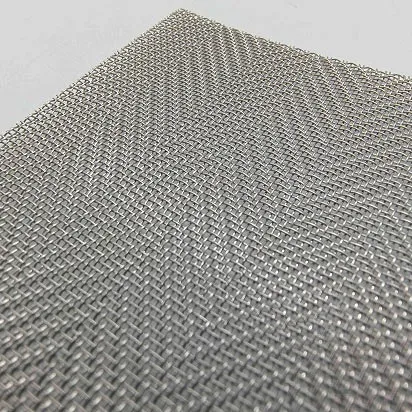
Common Application Areas:
- Petrochemical and Oil & Gas: Critical for catalyst support grids, gas-liquid coalescers, and refinery processes where high temperatures, pressures, and corrosive media are common. It functions in desulfurization units and molecular sieve beds, ensuring efficient separation and protection of downstream equipment.
- Chemical Processing: Utilized in reaction vessels for support of active media, in filtration of aggressive chemicals, and as separation screens in distillation columns. The corrosion resistance of stainless steel herringbone mesh is invaluable here.
- Water Treatment: Employed in industrial wastewater treatment, municipal water filtration, and desalination plants for robust pre-filtration, media retention, and fine particle removal, extending the life of reverse osmosis membranes.
- Pharmaceutical and Biotech: Essential for sterile filtration processes, particle separation in drug manufacturing, and as support media for fermentation and cell culture systems, where purity and consistent performance are non-negotiable (often requiring FDA-compliant materials like SS316L).
- Food and Beverage: For sieving, straining, and filtration of various food products and beverages, from dairy and juice processing to grain separation. It ensures product quality and meets stringent hygiene standards.
- Mining and Mineral Processing: Used in dewatering, screening, and classification of ores and minerals, where its abrasion resistance and mechanical strength stand up to harsh, abrasive slurries.
- Plastics and Polymers: In extrusion processes, herringbone mesh acts as a melt filter to remove impurities from polymer melts, ensuring high-quality finished products.
- Aerospace and Automotive: For critical fluid filtration in hydraulic systems, fuel lines, and lubrication systems, where reliability and performance under extreme conditions (temperature, vibration) are paramount.
Each of these scenarios benefits from the consistent pore size, high mechanical strength, and excellent chemical resistance offered by advanced herringbone weave configurations, contributing to greater operational efficiency and enhanced product quality.
Vendor Comparison: Key Differentiators
Selecting the right supplier for herringbone mesh is crucial for ensuring product quality, performance, and long-term reliability. While many manufacturers offer wire mesh products, key differentiators distinguish top-tier vendors specializing in advanced weaves.
Critical Comparison Criteria:
- Material Quality & Traceability: Premium vendors provide full material traceability, often supplying Mill Test Certificates (MTCs) to verify alloy composition and compliance with standards (e.g., ASTM, EN, JIS). Inferior materials can lead to premature failure in corrosive or high-temperature applications.
- Manufacturing Precision: The accuracy of weave, consistency of aperture size, and absence of defects are paramount for herringbone mesh. Leading manufacturers use advanced weaving looms and sophisticated QC processes (e.g., optical inspection) to ensure tight tolerances.
- Customization Capabilities: The ability to produce mesh with specific wire diameters, mesh counts, material grades, and fabricated forms (e.g., welded filter elements, screens with specific edge treatments) is a significant advantage.
- Certifications and Standards Compliance: Adherence to international quality management systems like ISO 9001:2015, and compliance with industry-specific standards (e.g., API for oil & gas, FDA for food & pharma), signifies a commitment to quality and reliability.
- Technical Expertise & Support: A vendor with deep engineering knowledge can offer valuable consultation on mesh selection, design optimization, and troubleshoot application-specific challenges.
- Lead Time & Fulfillment: Efficient production processes and robust supply chain management ensure timely delivery, which is critical for project timelines and operational continuity.
- After-Sales Service & Warranty: Comprehensive warranty policies and responsive customer support for any issues or future needs demonstrate a vendor's commitment to long-term partnerships.
Vendor Comparison Table (Illustrative):
| Feature/Criterion | Premium Vendor | Standard Vendor |
|---|---|---|
| Material Certification | Full MTCs, ASTM/EN compliance | Basic material declaration |
| Aperture Tolerance | ±5% or better | ±10% to ±15% |
| Customization | Extensive (alloy, weave, fabrication) | Limited to standard sizes/materials |
| Quality System | ISO 9001:2015 certified | Internal QA, not certified |
| Technical Support | Application engineering team | Basic product information |
| Warranty | Comprehensive, performance-based | Limited, material/workmanship only |
Choosing a vendor that excels in these areas ensures that the investment in herringbone mesh translates into reliable performance, extended operational life, and optimal process efficiency.
Customized Solutions for Optimal Performance
While standard herringbone mesh configurations offer robust performance, many industrial applications require highly specialized solutions. Leading manufacturers understand that 'one size fits all' rarely applies in complex filtration and separation systems. Thus, the ability to provide customized herringbone mesh solutions is a critical service differentiator.
Areas of Customization:
- Material Selection: Beyond standard stainless steels (SS304, SS316, SS316L), customization extends to exotic alloys like Hastelloy, Monel, Inconel, Nickel, and Titanium, tailored for extreme corrosive environments, high temperatures, or specific chemical compatibility.
- Weave Specifications: Fine-tuning of mesh count, wire diameter, and crimp styles to achieve precise aperture sizes, open area percentages, and overall mesh thickness for specific filtration fineness or flow rate requirements.
- Dimensions and Forms: Producing rolls or sheets in non-standard widths and lengths, or fabricating custom-shaped filter discs, cylinders, baskets, or complex filter elements with specific edge treatments (e.g., welded, crimped, framed).
- Surface Treatments: Options for electropolishing to enhance corrosion resistance and reduce particle adhesion, or specialized coatings for anti-fouling or catalytic properties.
- Multi-Layer Composite Filters: Combining herringbone mesh with other weave types or perforated metal layers to create composite filter media with optimized strength, pre-filtration, and fine filtration capabilities.
- Edge Finishing and Fabrication: Precise laser cutting, plasma cutting, or punching for specific shapes; TIG or spot welding for durable seams; or crimping/folding for structural integrity within filter housings.
An experienced manufacturer works closely with clients, often leveraging engineering expertise and prototyping capabilities, to develop bespoke herringbone mesh solutions. This collaborative approach ensures that the final product not only meets but often exceeds the unique performance demands of the application, leading to optimized system efficiency and extended operational life.
Application Case Studies
Real-world applications powerfully illustrate the benefits and performance of herringbone mesh in critical industrial processes. These case studies highlight its ability to solve complex filtration and separation challenges.
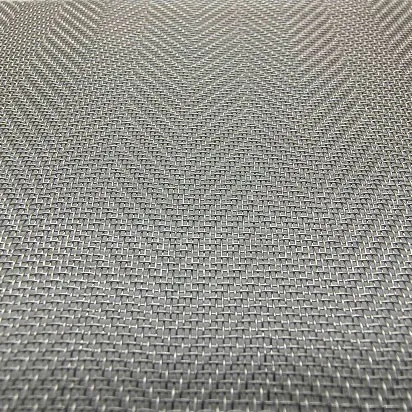
Case Study 1: Catalyst Support in a Petrochemical Reactor
A major petrochemical company faced challenges with catalyst bed instability and premature degradation of support media in its high-temperature, high-pressure reformer reactors. Traditional plain weave meshes lacked the mechanical strength and dimensional stability to consistently support the catalyst particles under severe operating conditions (up to 700°C and 50 bar).
- Solution: We provided custom-fabricated herringbone mesh support grids made from SS310 (for enhanced high-temperature resistance) with a specific weave density to optimize flow distribution and particle retention.
- Outcome: The client reported a 35% increase in catalyst bed life due to superior support and reduced particle migration. The enhanced mechanical stability of the herringbone mesh also led to a 15% reduction in pressure drop across the bed, contributing to significant energy saving and improved reactor efficiency. Overall maintenance cycles were extended by 6 months.
Case Study 2: Fine Particle Separation in Pharmaceutical Production
A pharmaceutical manufacturer required ultra-fine and highly consistent separation of active pharmaceutical ingredients (APIs) from a solvent slurry. Their existing filter media struggled with clogging, inconsistent pore size, and inadequate chemical resistance to the cleaning agents, leading to batch contamination and frequent filter replacement.
- Solution: We engineered SS316L herringbone mesh filter elements with a precisely controlled micron rating (e.g., 20 microns) and electropolished surface finish for enhanced cleanability and reduced particle adhesion. The mesh was fabricated into conical filter cartridges.
- Outcome: The new filter elements provided a consistent 99.9% filtration efficiency, eliminating product contamination issues. The superior cleanability reduced cleaning cycle times by 40% and extended the service life of each filter element by over 200%, resulting in substantial cost savings on consumables and reduced downtime. The stable pore size ensured product purity met stringent FDA guidelines.
These examples underscore the critical role of customized and high-performance herringbone mesh in optimizing industrial processes, enhancing product quality, and delivering tangible economic benefits.
Frequently Asked Questions (FAQ)
Q1: What makes herringbone mesh different from other weaves like plain or twill?
A1: Herringbone mesh features a distinctive V-shaped twill pattern where the diagonal ribs reverse direction at intervals. This creates a highly robust and stable structure with superior mechanical strength, dimensional stability, and precise aperture control compared to simpler plain or twill weaves, which have unidirectional diagonal patterns or simpler over-under interlaces. This results in better filtration efficiency and extended service life under high stress.
Q2: Can herringbone mesh be customized for specific industrial applications?
A2: Absolutely. Customization is a core strength. We can tailor the material grade (e.g., specific stainless steel, exotic alloys), wire diameter, mesh count, aperture size, and overall dimensions. Furthermore, we offer fabrication services to create custom filter elements, discs, cylinders, and assemblies with specific edge treatments to perfectly fit your system requirements.
Q3: What are the typical lead times for herringbone mesh orders?
A3: Lead times vary depending on the order quantity, level of customization, and current production schedule. For standard specifications, lead times typically range from 2-4 weeks. Highly customized or large-volume orders may require 4-8 weeks. We always provide a precise lead time estimate upon quotation and strive for efficient fulfillment to meet project deadlines.
Q4: What kind of warranty and after-sales support do you offer for your herringbone mesh products?
A4: We stand by the quality of our products with a comprehensive warranty against manufacturing defects and material failures under normal operating conditions. Our commitment extends to robust after-sales support, including technical assistance for installation, troubleshooting, and replacement parts. Our team of experts is available to ensure your continued satisfaction and optimal product performance.
Authoritative References
- ISO 9001:2015 - Quality management systems — Requirements. International Organization for Standardization.
- ASTM E2016-11 - Standard Specification for Industrial Woven Wire Cloth. ASTM International.
- ASM Handbook, Volume 1: Properties and Selection: Irons, Steels, and High-Performance Alloys. ASM International.
- Perry's Chemical Engineers' Handbook. McGraw-Hill Professional.
- Donaldson, E.C. (1989). Enhanced Oil Recovery. Elsevier Science.
Post time: Aug . 28, 2025 07:20
